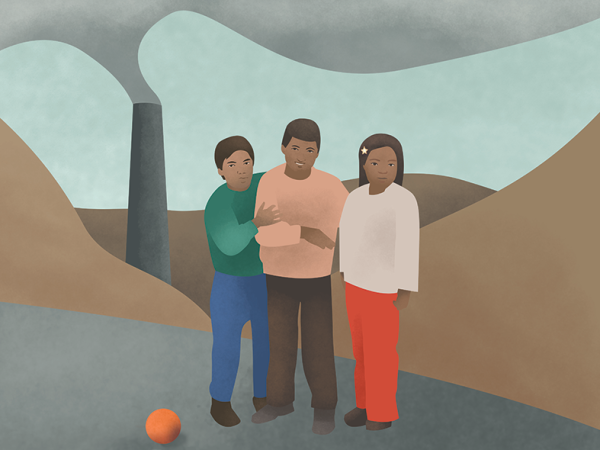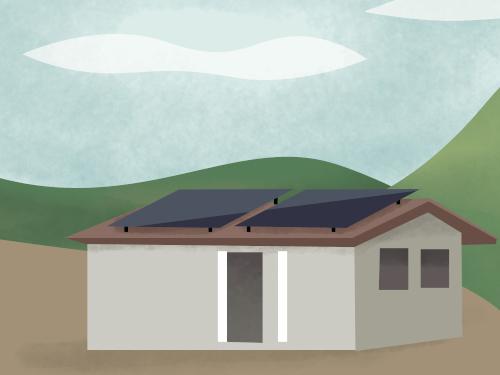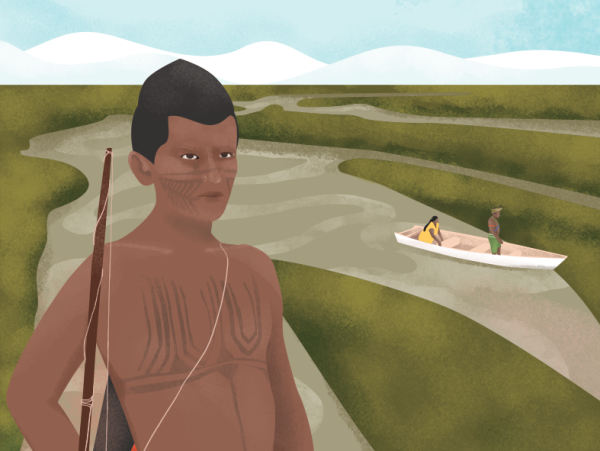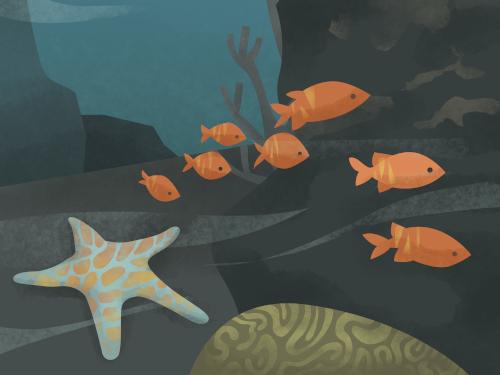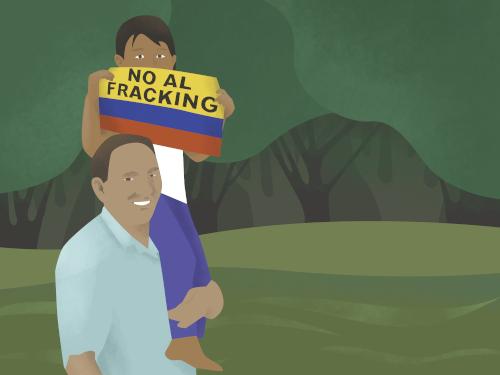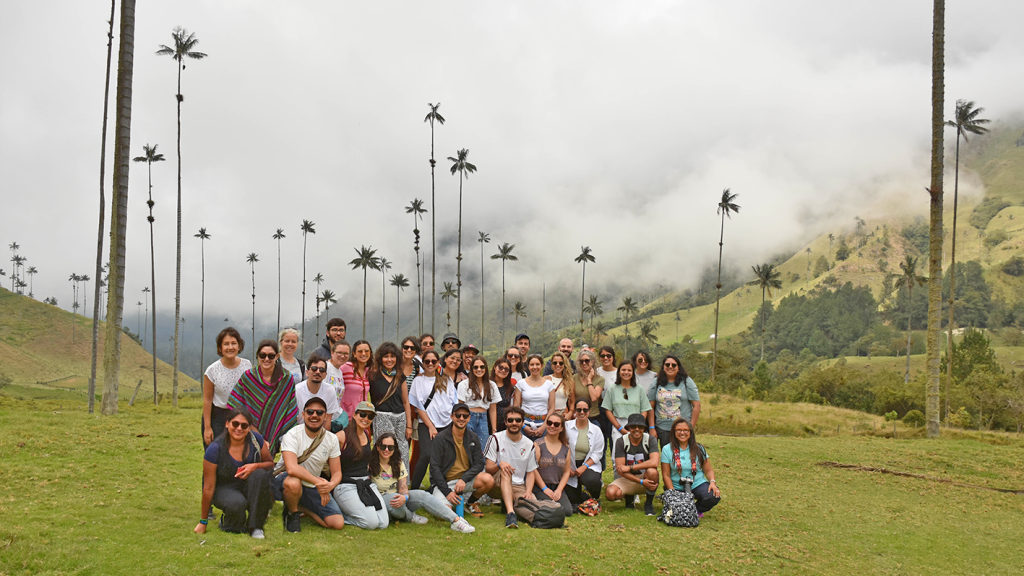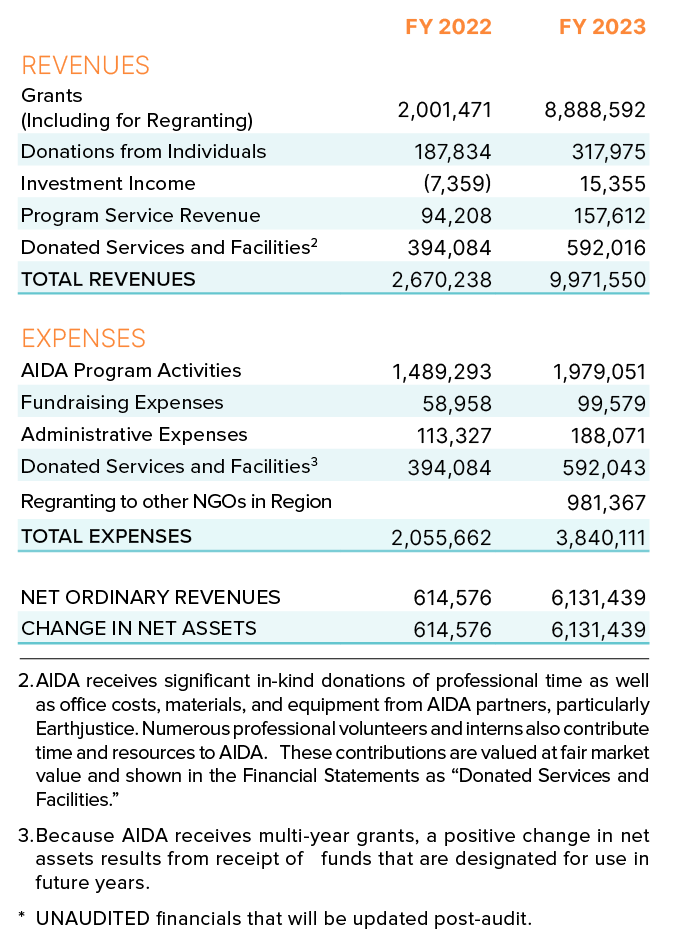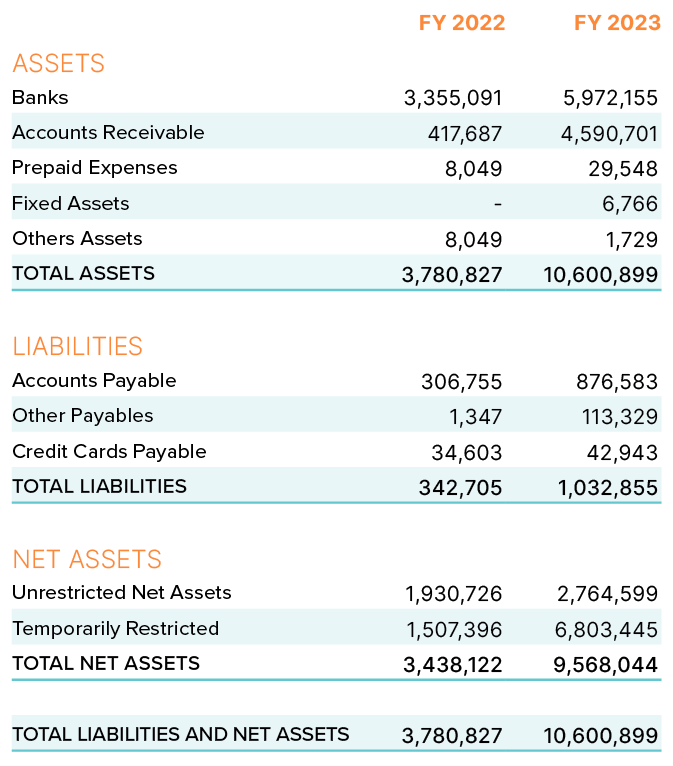
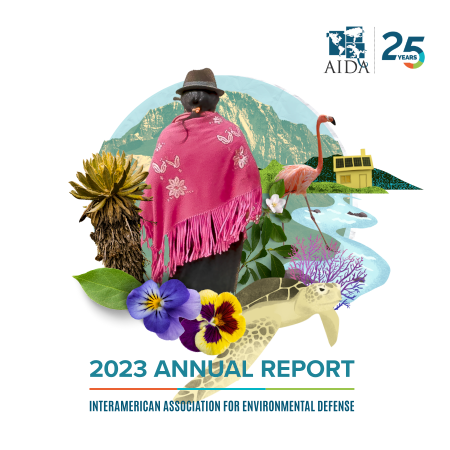
A MESSAGE FROM OUR DIRECTOR
A MESSAGE FROM OUR DIRECTOR
This year, AIDA celebrated its 25th anniversary. Our team and our work to protect the right to a healthy environment in Latin America have grown exponentially. Our executive director, Gladys Martínez de Lemos, closes the celebrations with a reflection on the achievements of these 25 years and our vision for the coming decades.
2023: AIDA BY THE NUMBERS
Advanced key legal protections for communities, ecosystems, and the climate across 12 Latin American countries.
Actively supported and engaged in 33 alliances, comprising more than 1,000 organizations globally.
Championed the rights of 52 indigenous, traditional, peasant, fishing, urban, and rural communities.
Advocated before 26 treaties, conventions, international organizations, accountability mechanisms, and international financial institutions.
Engaged in 27 legal proceedings, providing support in local and higher courts across Latin America and before international tribunals.
Directly contributed to the protection, preservation, and restoration of 25 vital ecosystems across the continent.
25 YEARS IN DEFENSE OF A HEALTHY ENVIRONMENT
THIS YEAR’S ADVANCES
ACHIEVING A VICTORY FOR THE CLIMATE

Anamaria Mejia / Shutter Stock
The causes and impacts of climate change cross borders.
This is also true for coal. Forty-four percent of global carbon dioxide emissions from fossil fuels come from the use of coal.
Regardless of where it is occurs, the burning of this mineral to generate energy is a major cause of the global climate crisis.
However, burning is not an isolated activity, it is a link in a chain that starts, for example, in Colombia, the fifth largest thermal coal exporter in the world and the main exporter in Latin America.
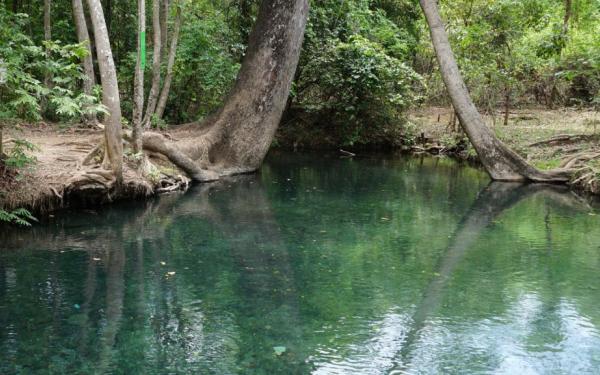
José David Castilla / AIDA
In this country, coal mining's contributions to the national economy have masked the sector's impact on ecosystems and entire populations.
Under the guise of mining royalties, the Colombian government has for years avoided incorporating the impacts of the coal chain into its climate policies and international climate change commitments.
To fill these gaps, AIDA and the José Alvear Restrepo Lawyers Collective — as part of a large and diverse coalition — led litigation aimed at holding the government accountable, in compliance with existing laws, to incorporate coal impacts into its climate actions.
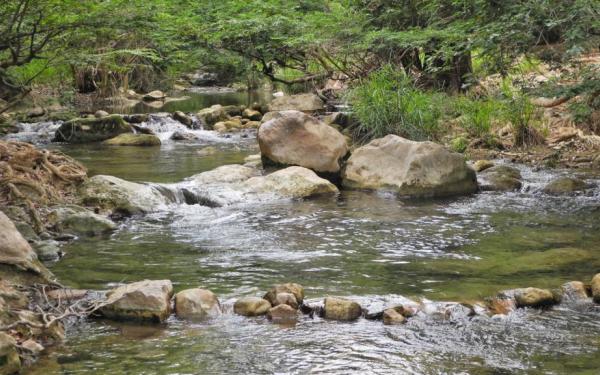
Jennifer Moore
"Given the role of coal in the climate crisis, the goals of any country — and even more so a country where this sector is predominant — must include identifying, preventing and managing the climate impacts of coal extraction, transportation and combustion," explains Rosa Peña, AIDA senior attorney
As a response to the litigation, the State Council, a Colombian high court, ordered the government to adopt concrete mitigation and adaptation measures to address the climate crisis in the country.
Moreover, this litigation is significant as one of the first to highlight a State's historic failure to meet its obligations in the global fight against the climate crisis, and it has the potential to become a precedent for successful strategic climate litigation at the regional and global levels.
PROTECTING HALF OF THE PLANET
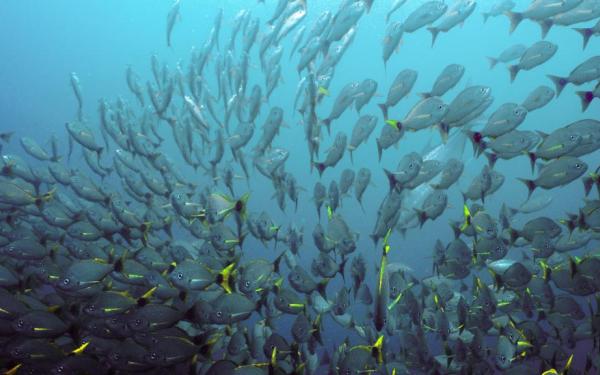
Juanma Clemente Alloza /Unsplash
After nearly 20 years of negotiations, and more than five years since the process was formalized, world leaders have finally reached a treaty to protect the biodiversity of the high seas.
This zone, situated beyond national borders, encompasses nearly half the surface of our planet and two-thirds of the ocean.
Although the high seas are a critical ally — as a source of food and oxygen, a climate regulator, a mitigator of the impacts of the climate crisis, and a livelihood for fishing and tourism communities — only 1.2 percent of these waters have had international protection until recently.

Tracey Jennings / Ocean Image Bank
This changed on March 4, 2023, when governments at the United Nations agreed on the text of the groundbreaking High Seas Treaty, which was formally adopted on June 19. This treaty represents a critical opportunity to improve the protection and sustainable use of our oceans.
"The agreement sets out a path for establishing large and effective protected areas in the high seas, as well as for the environmental impact assessment of projects and activities that could harm this vast area," says Gladys Martínez de Lemos, executive director of AIDA, who participated for years in the rounds of the treaty negotiations, including the last one
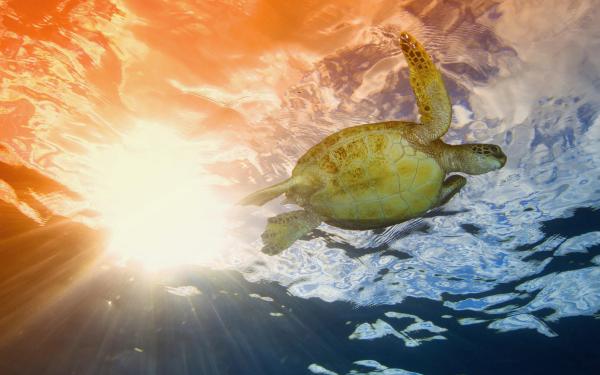
Gregory Piper/ Ocean Image Bank
For more than eight years, and as part of the High Seas Alliance, AIDA has co-led Latin American civil society's contribution to achieving a strong agreement.
In the face of climate and biodiversity loss crises, the High Seas Treaty arrives at a crucial time for ocean protection.
For it to enter into force, it must be ratified by 60 countries, which the global community expects to happen by 2025.
International bodies have created a unique opportunity to change the fate of the ocean. Now is the time to ensure that Latin American countries adopt and implement the High Seas Treaty to help maintain a healthy and resilient ocean.
OUR VISION FOR THE FUTURE
Latin America is key to the protection of biodiversity and the fight against the global climate crisis. The region’s forests, wetlands, and marine ecosystems are among the most important carbon sinks on the planet, a service weakened by human activities such as the exploitation and use of fossil fuels.
We envision a region where the environment and communities, especially those in highly vulnerable situations, have lasting protections. To achieve this, we select precedent-setting cases that result in new, replicable tools and strategies that contribute to the protection of a healthy environment in the region.
In the coming years, we will continue our pursuit of environmental and climate justice through two interconnected initiatives, each with strategic and reinforcing lines of work.
- •Avoiding dependence on oil and gas.
- •Halting the extraction and use of coal.
- •Promoting renewable and sustainable energies.
- •Advocating for human rights-based climate finance and governance.
- • Protecting the ocean, from the coasts to the high seas.
- • Preserving freshwater sources and traditional territories.
- • Defending culture and traditional livelihoods.
- • Improving air quality.



